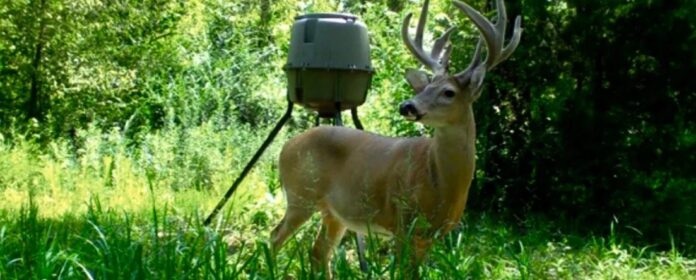Deer feeders are excellent tools for luring deer. Whether you want to take a shot at it with a gun or a camera, you won’t find a better device. However, feeders will wear out eventually, just like everything else on this planet. The good news is that there are some simple steps you can take to maximize the life of your feeder and get the most out of it before it’s time to get a new one.
1. Be Careful Getting it to The Site
Not surprisingly, one of the fastest ways to destroy your feeder is to not be careful enough with it when transporting it to the site where you want to set it up. The last thing you want to see is your feeder tumbling off the back of your ATV down into a ravine and smashing apart on the rocks below. This makes it critical to properly secure your feeder during transportation. Check and double-check to make sure that there is no way that anything could possibly go wrong.
Even relatively safe terrain could pose risks such as branches that could damage the feeder or bushes that delicate parts could get caught on. Make sure you know your route and don’t get too hasty and you’ll be better able to keep your deer feeder safe from harm.
2. Inspect Your Feeder for Damage
Every now and again you want to check over your feeder to make sure that it hasn’t been damaged by wildlife or by other issues that could occur. This includes falling branches or debris that could smash into it during high winds. The sooner you notice any damage to your feeder, the sooner you can get it patched up to prevent the problem from compounding. This is especially true if it somehow springs a leak or gets feed stuck in the delivery mechanism.
3. Trouble Shooting Problems
On a similar note, if your feeder does become damaged or if the electronics begin to malfunction, it doesn’t necessarily mean your feeder is dead in the water. There is a good chance that you can fix the problem as long as you have the tools and know-how. That said, don’t do anything dangerous such as sticking a limb into the delivery device if there is one, and don’t attempt to work on the electronics while the batter is plugged in. Play it safe and you’ll most likely be able to get your feeder working again. If not, you can always try taking it to someone who is skilled enough to repair it.
4. Remember Your Warranty
If your feeder comes with a warranty, make sure that you know the terms and conditions of it and how long it lasts. If something goes wrong with your feeder during the time in which your warranty is active, you’ll be glad you have it. Also, if your feeder is defective on arrival, make sure that you send it back for a new one. Even a minor problem can balloon into something serious that severely decreases the lifespan of your feeder if you ignore it.
5. Keeping Critters Away
You want deer to feed from your feeder, not squirrels and raccoons. A few here and there are unavoidable and not much of an issue. But, if unwanted wildlife is swarming the device, not only will it be a major waste of feed, but they can also damage it as well. If you notice that a ton of critters are getting into your feeder, take measures to keep them away such as using grease to prevent climbing, barbed wire to protect sensitive areas, and special lids if your model would benefit from them. It really just depends on what the problem is and what you need to do in order to keep the critters at bay.
Getting the Most Out of Your Feeder
A feeder is a very smart investment for hunters and photographers alike. and the more care you put into the upkeep of your feeder, the longer it will last and the more value you will get out of it. Keep this in mind when transporting it and when checking over it to make sure that it is in working condition. If the feeder shows signs of damage, see if you can fix it. If not, then it may be time for a new feeder.

